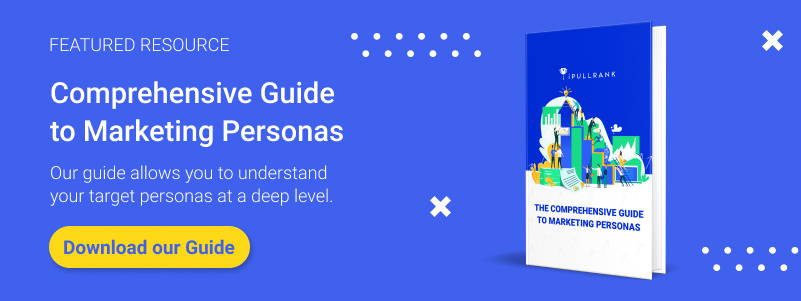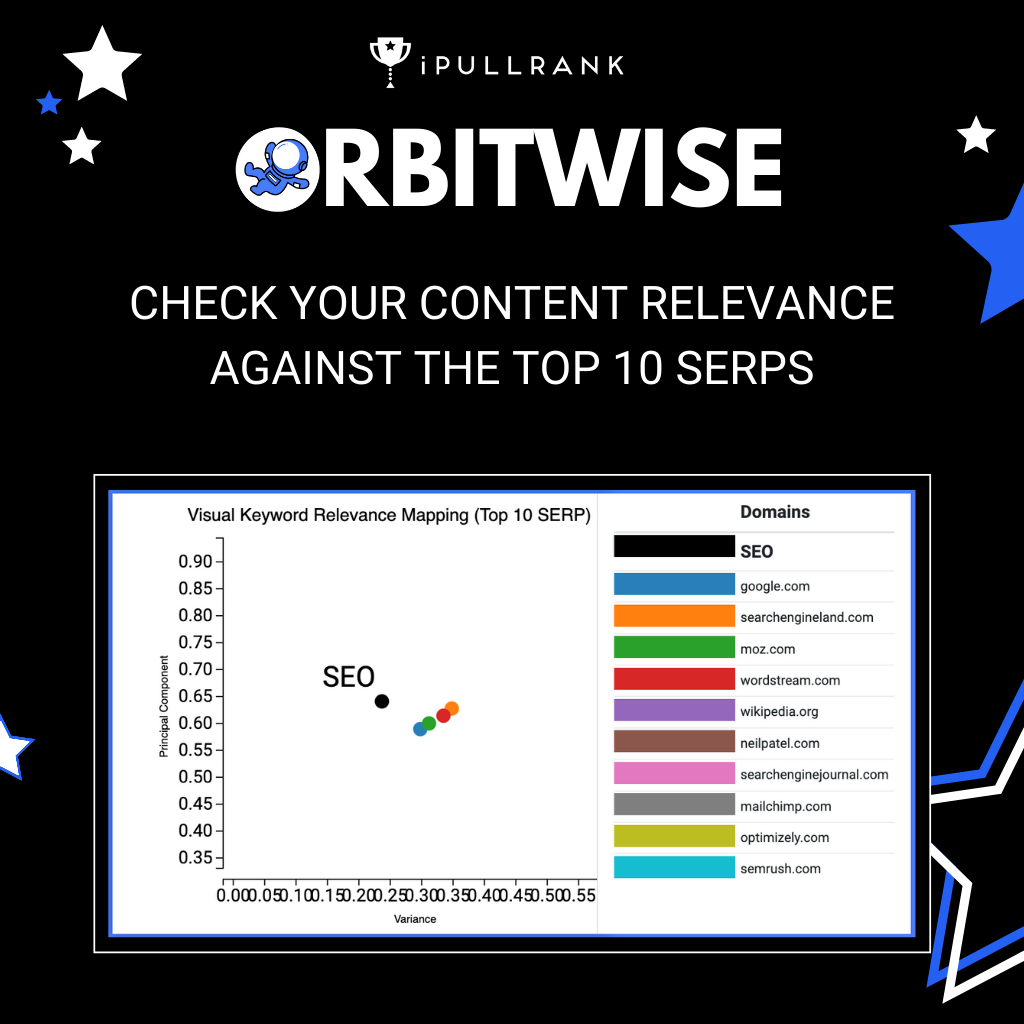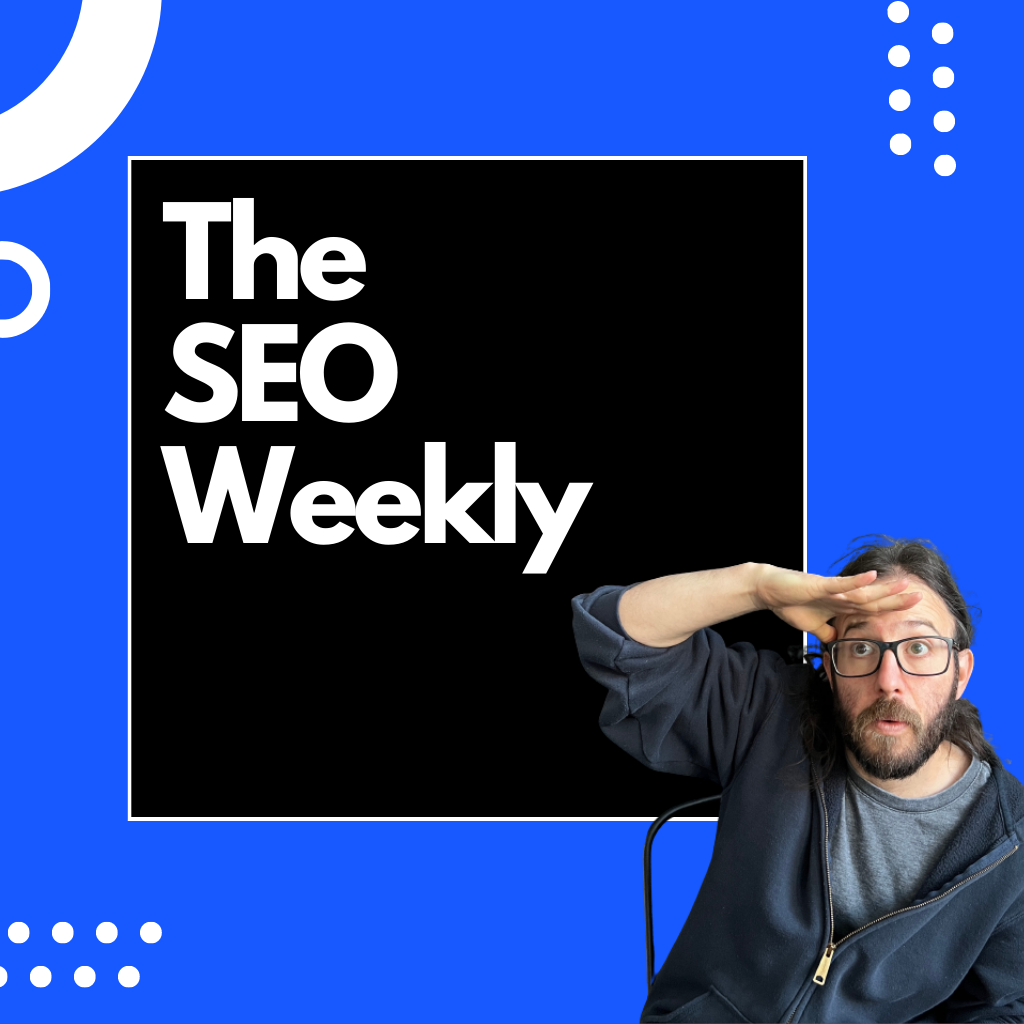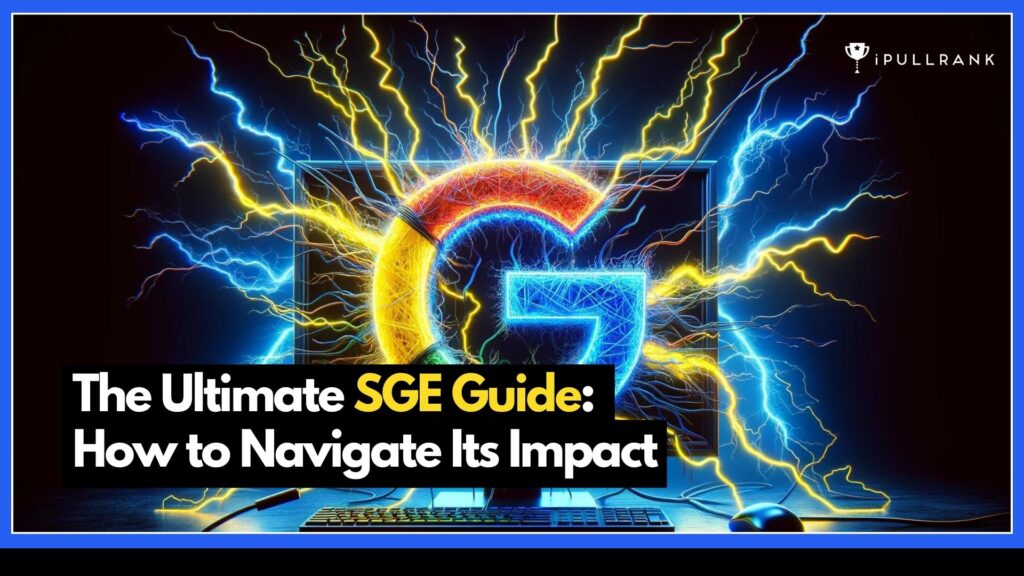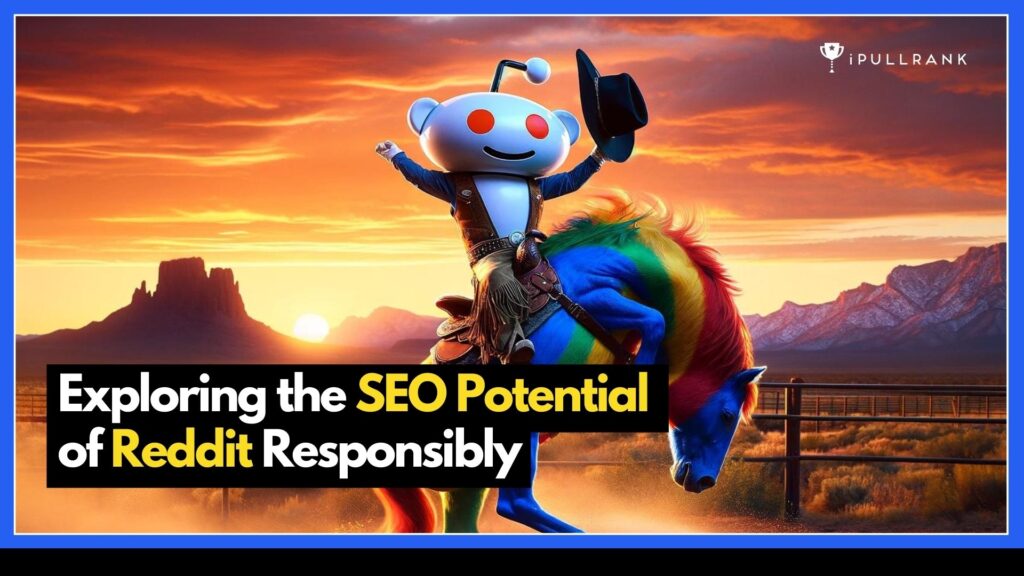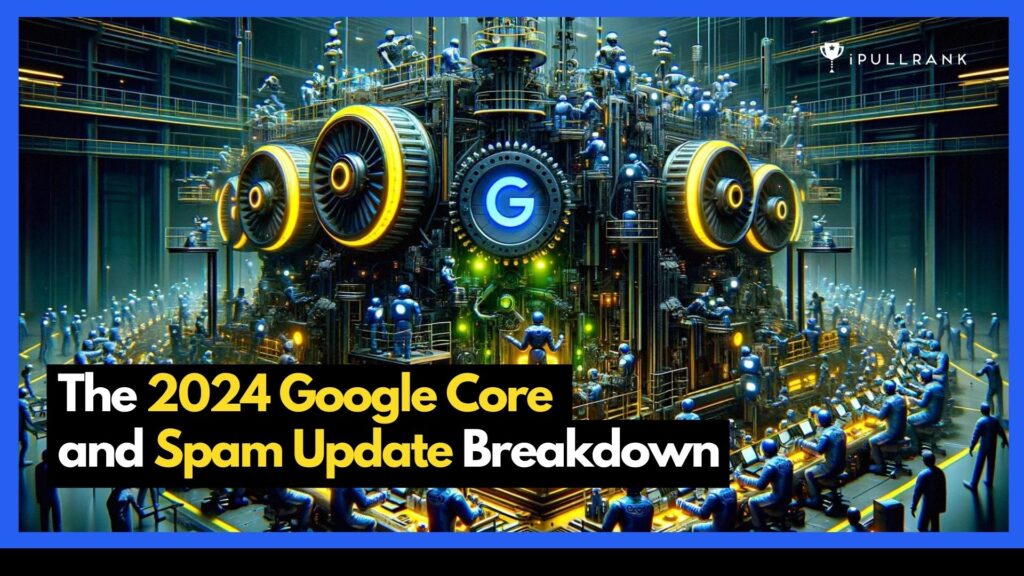Have you ever thought about the process of purchasing something, from first hearing about a brand and its products to finally swiping that credit card? I want you to think back to the last time you purchased something you thought about buying for a while. How did that decision finally come to be?
Well, marketers spend countless hours trying to figure out what types of interactions can sway a potential customer such as yourself to purchase. The rationale behind why a purchase was made is something that all marketers want to understand. In order to more accurately pinpoint the reason why, we have to look at the customer journey at a more granular level and dissect the entire purchasing process section by section. But before we get into it, it’s crucial that you have an understanding of what a customer journey is.
What is a Customer Journey?
The customer journey is essentially a tailored roadmap with various touchpoints to nudge potential customers to purchase from a brand. Refining the customer journey map is extremely important because a comprehensive understanding of what your potential customers want at each stage of the customer journey will increase the chances of conversions.
Before we dive into specific examples of the different touchpoints that are included within a customer journey, you have to first look at the bigger picture. The customer journey consists of 5 different stages:
- Awareness: Potential customers are made aware of a problem that needs solving and are looking for possible solutions.
- Consideration: Potential customers have done their research and are looking for a more comprehensive answer to their specific needs.
- Purchase: Potential customers are ready to purchase from brands they believe can solve their problems.
- Retention: You have successfully converted a potential customer into a paying customer. Work hard to retain these customers as it costs 5 times more to acquire a new customer.
- Advocacy: The customer you have acquired becomes an advocate for your brand and can help spread the word about how great your brand is.
Now that we’ve identified the 5 different stages of the customer journey, we can map out the specific touchpoints appropriate for each stage. In this article, I will be primarily focusing on the purchase decision process, which includes Awareness, Consideration, and Purchase, the first 3 stages of the customer journey.
An effective way to categorize the Awareness, Consideration, and Purchase stage is to break them down using the “Marketing Funnel.” The marketing funnel helps describe where your potential prospect is in the purchase decision process and it includes Top of Funnel (TOFU), Middle of Funnel (MOFU), and Bottom of Funnel (BOFU).
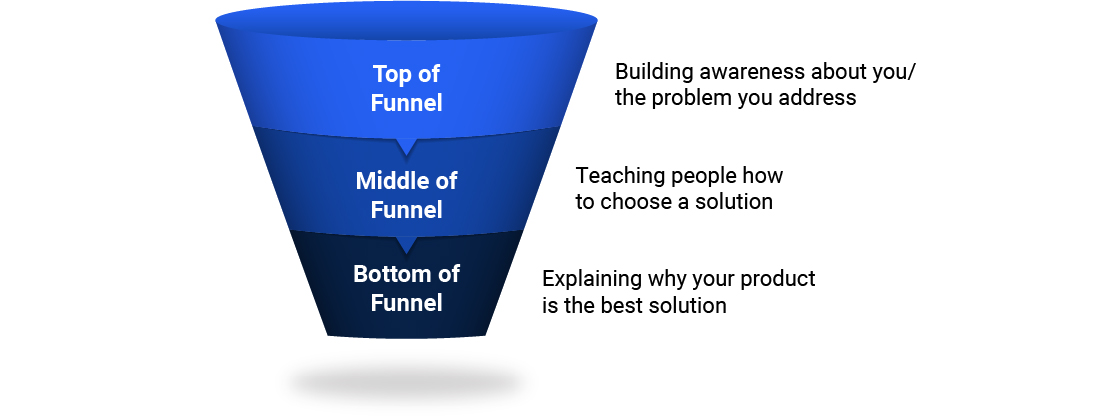
It is crucial to identify the different needs that potential customers may have in each stage of the marketing funnel. Once you’ve identified what those needs are, you need to create different types of content that are aligned with each stage of the marketing funnel in order to effectively convert potential customers.
Types of Content for Top of Funnel (TOFU)
Top of funnel marketing refers to campaigns that are meant for building awareness about your brand and the products/services you offer. Top of funnel content should focus on bringing value to your potential customers at an introductory level. An example would be if someone were to ask, “What is SEO and why is it important?” a useful piece of content, in this case, would be a blog post about the basics of SEO and how investing in SEO is crucial for business success.
Top of Funnel content should really be about showcasing your expertise and establishing your brand as a credible source of information for your potential customers. Once you’ve established yourself as a reliable source of information, your potential customers will revisit your website whenever they need more information about a particular industry.
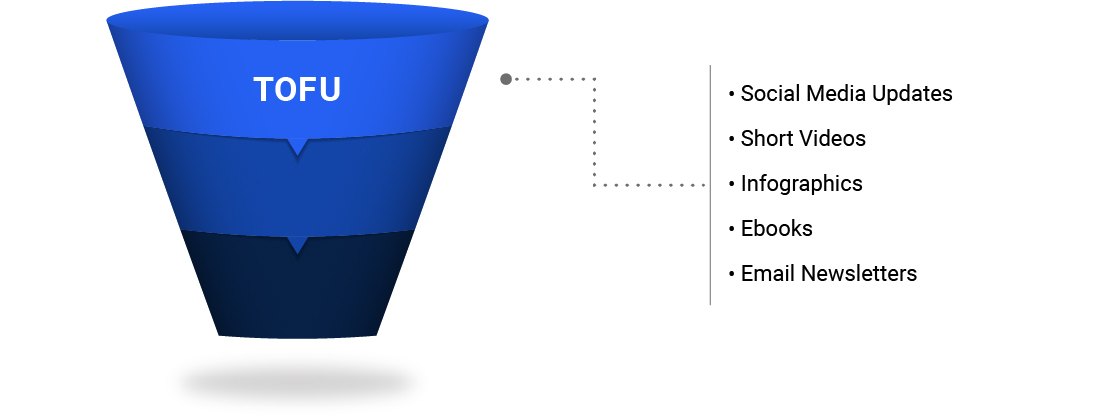
Some of the most popular types of TOFU content include blog posts, social media updates, short videos, infographics, ebooks, and email newsletters. An important tip is to always be thinking about what types of content work best within your industry and align your content creation efforts under that pretense.
But before you start creating Top of Funnel content, it’s essential to conduct ample research on the specific queries people are searching for. Once you’ve researched popular topics and trends, you need to look for creative ways to present your content to your audience. Some unique twists you can incorporate into your content creation process include:
- Blog Posts – Incorporate a specific case study to prove your point and offer a unique perspective, or include lots of imagery to help elevate the reader’s experience when consuming your blog articles.
- Short Videos – Edit your videos before posting, add appropriate after-effects, include subtitles, intro video, outro video, or maybe even feature other people’s videos within your video.
- Social Media Updates – Create well-designed infographics that can be redistributed and reused throughout all your social channels.
- Newsletter – Test out different subject lines that align with your brand voice, include expert insights to sum up the content of your newsletter, or even feature your competitor’s blog post (if it’s REALLY great).
There are infinitely many ways to improve the quality of your content, and at the end of the day, the quality of TOFU content will determine whether or not your potential customer will even consider buying from you.
Types of Content for Middle of Funnel (MOFU)
After having consumed your TOFU content, many potential prospects will eventually want more in-depth content to learn more about how to solve their specific problems. By now, you should have already established your brand’s authority and trustworthiness and your potential customers are ready to dive deeper into the more technical aspects of your industry.
The Middle of Funnel is dedicated to offering different solutions and perspectives that your potential customers may be looking for after preliminary research. Continuing with the same example as I mentioned in the previous section of an individual looking to understand what SEO is and how it can benefit his/her business. Having read the wonderful article on the basics of SEO, this curious individual would like to further understand how to incorporate SEO strategies into his/her business. This is where the Middle of Funnel Content comes into play.
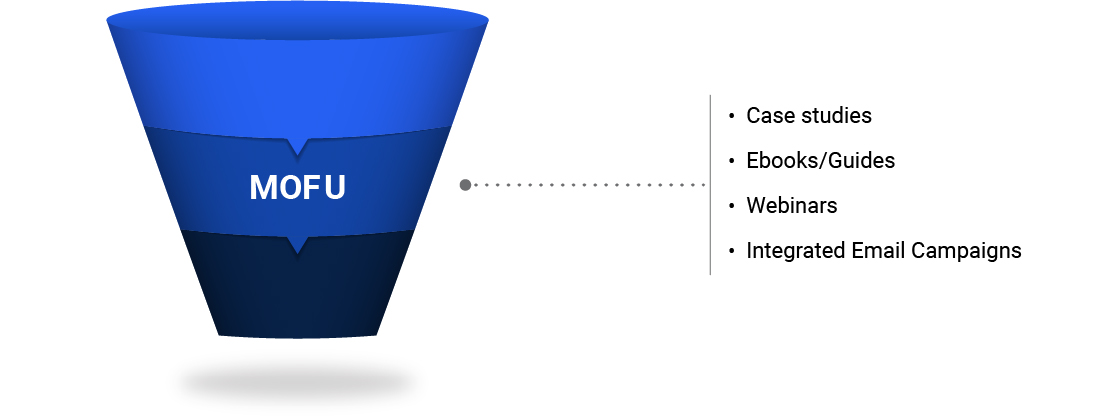
The primary purpose of MOFU content is to teach prospective customers how to choose the proper solutions to their problems. Some of the more popular types of Middle of Funnel content are Case studies, Ebooks/Guides, Webinars, and Integrated Email Campaigns.
When you’re creating Middle of Funnel Content, it’s important to keep in mind that your audience is looking for in-depth information that offers valuable perspectives, so be sure to put in more effort in making your MOFU content more technical and insightful. Some ways to bring your MOFU content to the next level include:
- Ebooks/Guides – Include expert analysis, have someone on your team with expert knowledge to lead instead of people with minimal knowledge on the subject matter. At iPullRank, we have Mike King contributing to all our long-form content so you already KNOW it’s solid.
- Case Studies – Include case studies of multiple industries, pain points, and problems. People want to know that you have solutions to their current problems as well as solutions to potential problems.
- Webinars – Webinars are great for in-depth discussions on certain topics. Invite esteemed experts to co-host the webinar, including a Q&A session for audience engagement, and build a quality deck with a sleek design.
- Integrated Email Campaigns – Create multiple targeted Middle of Funnel email nurture campaigns for people with different interests. For example, an SEO-specific nurture track will host different content from a Content-specific nurture track.
The Middle of the Funnel is where you really get to showcase your expertise. Everyone can create content at a basic level, but not everyone can create quality in-depth content. Prospects are much more likely to move down the funnel and eventually purchase from you if you invest in creating quality MOFU content.
Types of Content for Bottom of Funnel (BOFU)
At this point, your prospects should be convinced that you know what you’re talking about and you are indeed capable of solving their problems. What can you do to push them over the finish line and buy from you? You need to create Bottom Funnel content that connects seamlessly with content from the upper funnels.
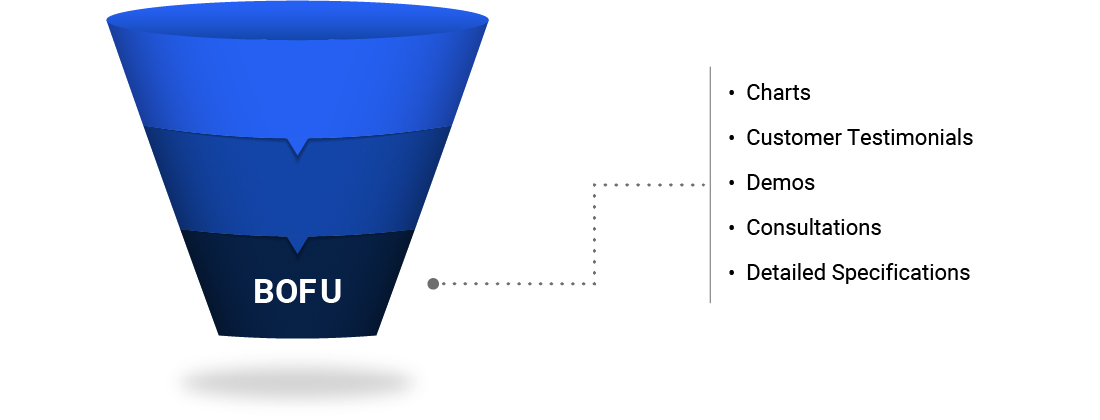
The Bottom of the Funnel is where you “close” because prospects are ready to make a final decision. How do you make sure that they buy from you instead of your competitors? Some of the most compelling content you can create for the Bottom of Funnel is competitive comparison charts, customer testimonials, demos, consultations, and detailed specifications.
- Competitive Comparison – Create assets that showcase the competitive advantages you have against your competitors. Always highlight your strengths and provide strong reasoning for why your strengths can overshadow your weaknesses.
- Detailed Specifications – The SEO industry is complicated and full of jargon. It is sometimes difficult for prospects to understand the exact specifications of our products/services, so we created deliverable pages to better help our prospects understand the variety of products that we offer in a clear and concise manner.
- Customer Testimonials – We all know how positive reviews can shine a real positive light on your brand. If your clients are happy, have them go on record and praise you, there is no shame in that! I’m sure they would love to help you out, especially if you do great work. Here’s a video testimonial by Rank Fishkin on iPullRank, check it out!
The Bottom of Funnel Content needs to be about how great you are at what you do. You have to convince your prospects that buying from you instead of your competitors will be the best decision they will ever make. BOFU content is often overlooked, but it is incredibly important as it is the final step before a prospective buyer becomes an actual buyer, so don’t neglect BOFU Content going forward.
How Can You Start?
Now that you have a good understanding of the different types of content needed to support a full-funnel marketing strategy, it’s time to start thinking about the content creation process. The most important first step is to understand who your target audience is. Once you’ve identified your target audience, you then map out a full-funnel customer journey with a couple of realistic, attainable, actionable steps.
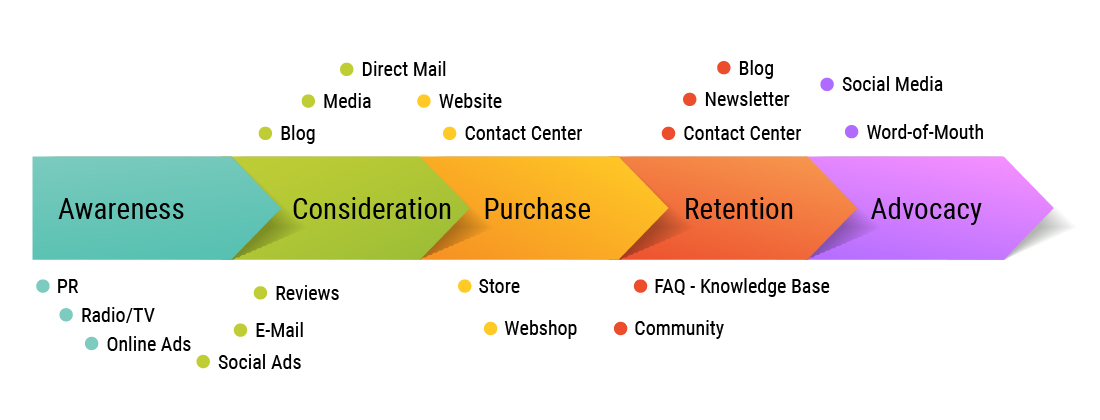
You can always circle back and refine your customer journey map later on, but it’s crucial to have a blueprint of the central strategy so you don’t stray away from the ultimate objective, which is to increase conversions and bring in new business. I understand that content creation can be a major strain on resources, especially at smaller companies, but investing in a content creation team is necessary to scale your marketing efforts. Here is a quick checklist of things you can do to get started:
- Accurately define your target audience – This is the most important step of the whole process because if you are targeting the wrong people, none of what you do will ever work, so revisit what you have if necessary.
- Map out a blueprint for your core strategy – It doesn’t have to be an in-depth roadmap of every piece of content you want to produce, but it should give you a clear direction of how to approach your strategy.
- Brainstorm content ideas – Brainstorming content ideas with your team should be a recurring task. Exchanging perspectives and taking time to think back on your collective discussions can turn good ideas into great ideas.
- Streamline your content creation process – Utilize resources to ensure the smoothness of your content creation process. Put the right people in place to make sure all parts of the content creation flywheel are properly coordinated.
- Start creating – Ideas are just ideas without people making them a reality.
- Measure your content performance – Identify KPIs that align with your content as well as your business goals. Utilize marketing tools to help you track content performance. Optimize your content efforts according to measurements.
The team at iPullRank knows just about everything there is to know about marketing strategies, and we’re more than capable of building a tailored full-funnel marketing strategy just for you. So if you think your content needs ramping up, don’t hesitate to contact us today. We’re ready to help push your business to the next level.
- The Ultimate List of Every Google Update Related to Mobile First - September 1, 2021
- 5 Examples of eCommerce Content Marketing - August 25, 2021
- How To Create a Black Friday Content Strategy - August 19, 2021


